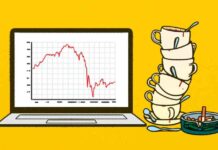Canadian GDP Growth in July Below BoC Forecast
Canada’s gross domestic product report for July, set to be released next Friday, will be closely watched by economists and policymakers to gauge whether the slowdown in the economy that began in late Q2 has extended into Q3. Early indications suggest that there may be a modest 0.1% increase in July GDP, slightly higher than the previous estimate for an unchanged reading a month ago. However, this would still continue a trend of softer economic growth dating back to May.
The second quarter of the year saw a 2.1% annualized increase in GDP, with much of the growth driven by a 0.4% uptick in output in April. However, this momentum faltered in the following months, with growth softening to 0.1% in May and stagnating in June. If the anticipated increase in July materializes, it would still be considered historically low and could result in another decline in per-capita GDP in Q3, marking the eighth decline in the last nine quarters.
Factors Influencing July GDP Growth
The expected slight growth in July GDP is believed to be evenly distributed across both goods and services sectors. The manufacturing industry, for instance, is predicted to see a 0.6% increase in GDP based on the July manufacturing sales report. However, challenges in the energy sector, including a decline in oil sands production in Alberta and reduced oil drilling activity, are likely to weigh on overall economic performance.
On a more positive note, wholesale and retail sales experienced growth in July. Nevertheless, data from credit card transactions suggests that spending in the hospitality sector remained relatively flat. These mixed signals indicate a complex economic landscape with various sectors experiencing diverging trends.
Bank of Canada’s Response
The Bank of Canada (BoC) has been closely monitoring the economic situation, particularly in light of slowing inflation and rising unemployment rates. The forecast for Q3 GDP growth stands at around 1%, significantly lower than the BoC’s previous estimate of a 2.8% increase. This disparity has prompted discussions about potential policy responses, with many speculating that the BoC may continue to cut interest rates incrementally to stimulate economic activity.
While the base case scenario suggests a gradual reduction of 25 basis points per meeting, there is a possibility of more aggressive rate cuts in line with the U.S. Federal Reserve’s recent decision to implement a larger initial cut of 50 bps. These measures aim to mitigate the risks associated with a further slowdown in the economy and to support overall growth prospects.
Upcoming Economic Data to Watch
Looking ahead, upcoming economic data releases will provide further insights into the health of the Canadian and U.S. economies. In the U.S., personal consumption is expected to show a modest increase of 0.1% in August, reflecting a slowdown from the previous month. Factors such as weaker auto sales and reduced sales at gas stations have contributed to this deceleration in retail sales growth.
On the Canadian front, the July Survey of Employment, Payrolls, and Hours (SEPH) data will be closely scrutinized for any signs of cooling in the labor market. Despite a slight rebound in employment numbers in August following a dip in July, job openings are anticipated to continue declining due to weakening hiring demand. Wage growth, a key indicator of economic health, will also be closely monitored for any deviations from expectations.
In conclusion, the economic landscape in Canada remains uncertain as GDP growth in July falls below initial forecasts. The BoC’s response to these developments, along with upcoming economic data releases, will play a crucial role in shaping the country’s economic trajectory in the coming months.

















